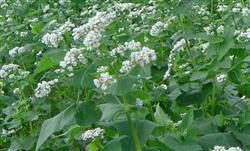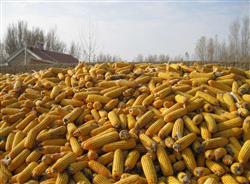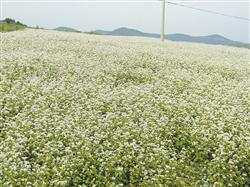Cultivation techniques of buckwheat

Buckwheat (also known as black wheat, flower wheat or Triticum triticum) has a short growth period, usually only 70-80 days, and has strong adaptability, so it is an ideal replanting crop after the disaster. The main points of planting techniques: buckwheat preparation is not strict on soil conditions, regardless of sandy loam, light loam, acid soil, slightly alkaline soil and newly reclaimed land, can be planted. Deep ploughing and fine raking are required before sowing to loosen the soil. Fertilizing buckwheat is a crop that needs more fertilizer. Every 100 kg buckwheat needs to absorb 3.3 kg of nitrogen, 1.5 kg of phosphorus pentoxide and 4.3 kg of potassium oxide. In addition, according to the study, buckwheat root system has a strong ability to absorb phosphorus and potassium fertilizer, especially for insoluble phosphate fertilizer, has a special utilization ability, the application of phosphorus and potassium fertilizer can significantly increase buckwheat yield; nitrogen fertilizer should not be applied more, otherwise it is easy to lodge. The base fertilizer is mainly barnyard manure, phosphate fertilizer and plant ash, and appropriate topdressing during the growing period. Before sowing, select large and full seeds and dry them in order to promote post-ripening and improve germination energy and germination rate. The sowing rate is 2kg / mu, and the sowing time can be extended to the middle and late July. Sowing methods include sowing, on-demand sowing and strip sowing, with row spacing of 35 cm to 50 cm and sowing depth of 3 cm to 4 cm. When the soil is dry, it can be deepened to 5 cm to 6 cm. After management and sowing, suppress according to soil moisture, hoe and kill grass after emergence to prevent water evaporation; combine soil cultivation and topdressing before flowering to carry out the second intertillage. The flowering period of harvested buckwheat is very long, the seed ripening is very inconsistent, and the grain is easy to fall off, so the suitable harvest time is very important; generally, when most plants have 2 + 3 fruits turn brown, it is the suitable harvest time. Harvest time is best chosen in the morning when the dew is not dry, and pay attention to light cutting and light handling, in order to reduce the loss of falling grains. If you encounter frost damage or windy weather before harvest, you should seize the harvest. Click to get more buckwheat planting techniques click to get more food crop planting techniques
- Prev

What problems will affect the yield of summer corn?
What problems will affect the yield of summer corn? Please introduce the following factors that affect the yield of summer corn: first, careless seed selection. As the current seed propagation system is not perfect, unqualified maize seeds still account for a large proportion. Some farmers are greedy for bargains, from small traders or irregular seeds.
- Next

How to plant buckwheat in autumn?
How to plant buckwheat in autumn? Please introduce the planting of buckwheat in autumn with reference to the following methods: first, sowing at the right time. Buckwheat likes warm and cool environment, is afraid of frost, and sows too early or too late, which will seriously affect the yield. The suitable sowing date for the south area along the Yangtze River in our province is around the middle of August, and along the Huaihe River in August.
Related
- The first cup of black tea in spring, the flavor and history of tea gardens in Kenya, Africa
- The computer can not only choose potatoes, but also grow tea rice. AI will grow winter oolong tea champion.
- It is not only the inflated tea bitten by insects, but also engraved with the four seasons tea in Beipu.
- The Oriental Beauty Tea Festival in Zhuxian County takes the stage at the weekend to experience the plus-size feast of oil tea.
- & quot; Oriental Beauty Tea & Exploration of Emei in Hsinchu, the hometown of quot;
- The new variety of strawberry "Tainong 1" dessert is the first choice with mellow aroma. Crimson gorgeous
- History of Tea in Taiwan: from Wild Inner Mountain to Export Tea Garden
- Two types of Taiwan Oriental Beauty Black Tea won the British three-Star Award for Childhood Tea Xiang Zhang Jiaqi changed from pilot to champion tea maker.
- Banana species and varieties: the planting history of Taiwan Xianren banana and dwarf banana is long, is banana disease resistant?
- Coffee planting Technology: Qianjie Coffee from Seedling to harvesting

